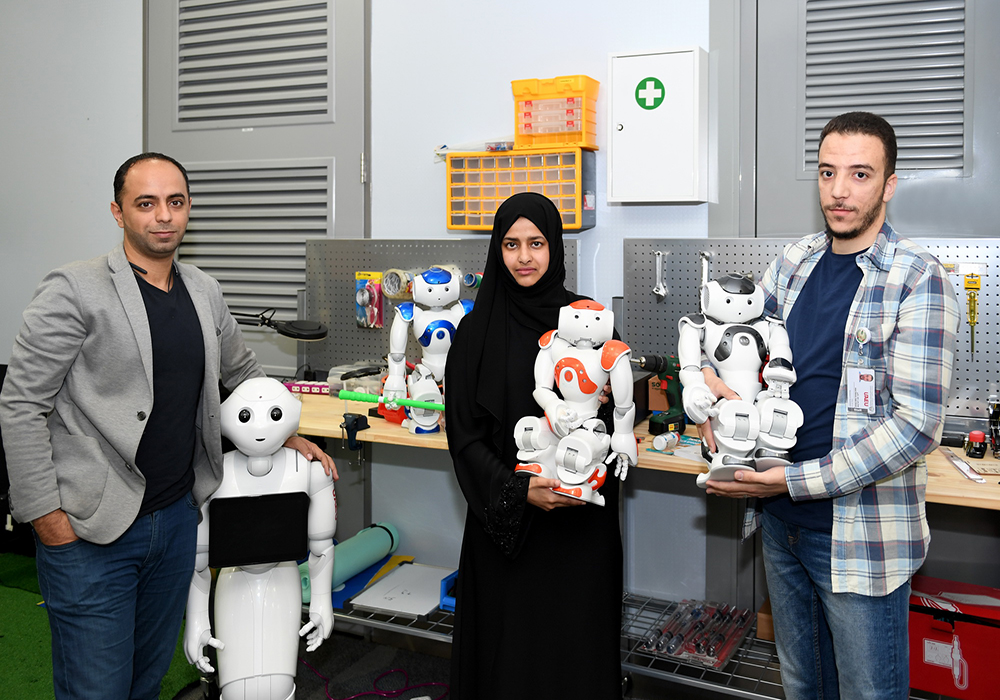Humanoid robot to help measure (ASD) children’s attention span
Mon, 6 June 2022

Researchers at the United Arab Emirates University have developed a humanoid robot that can show emotions, in an aim to care for special needs children.
The project builds human sense into robots with the objective of helping (ASD)children focus their attention more easily.
“The idea started from the point of view that, in one type of ASD, the children actually perceive the human as a complex object,” said Dr Fady AlNajjar, Assistant Professor at the College of Information Technology. “They are kind of allergic to complexity so whenever they see it, they try to avoid eye contact and communication as it’s a huge amount of information for them.”
Regular humans are able to filter the complexity, while some types of ASD are unable to filter input information, creating increased complexity. This makes it even harder for them to communicate, leading to a loss in academic and communication skills.
“They cannot look at people and do the same thing they do, which is one type of learning,” Dr Najjar said. “We learn by observing other people or communicating with others, so if you lose that, you will lose the ability to learn. This is one of the hypotheses.”
The UAE has one of the populations that suffers the most from autism. Statistics from 2013 revealed that one child in 50 born in the country has autism. (maybe better we use ASD?)
“We need to decrease the complexity around and earn the attention of these children,” he said. “When we earn that attention, we can teach them academic and social skills.”
Reducing complexity for autistic children is complicated because doctors and therapists cannot constantly be forced to keep their emotions and behavior stable. On the other hand, a robot’s emotion can be controlled and simplified to gain the youngsters’ attention. “While we do that, we can then do the training and teach them in the background social, academic or communication skills,” he said. “We come up with an object, whether a robot or a character on a screen, and then simplify it as much as possible to get the child’s attention. If you get his or her eye contact, then you can teach him or her the skills you want to teach, like mathematics, and you can expect a better outcome from the learning.”
The team of academics is currently measuring the children’s attention span to be able to prove it increases when simplified objects, robots or software, are introduced to them.
One of the methods it uses includes one of the laboratories at the Massachusetts Institute
of Technology (MIT), which introduced different kinds of screen characters, such as
a face with very small ears, no hair, large eyes, and a small nose and mouth. “It’s
about simplifying the human look,” Dr Alnajjar added. “We put those faces on the robot,
it has human characteristics and a screen showing different emotions but simplified.
Some children will love the idea of having a robot or others will give more care to
the screen characters.”
His main target is to work on such a concept and distinguish the most simplified
version that can increase the child’s attention. Testing is currently under way with
a monitoring system developed to score the amount of attention given by the child
to each object.
The project has so far been deployed (in collaboration with therapists team) in Al Ain hospital, where data was also recorded from the children involved. The next step will involve introducing some academic skills to the children to see how they observe it, and whether it proves better than regular therapy.
“It’s under investigation now,” he said. “We are still trying to answer questions, like what kind of simplifications can earn more attention, and what kind of parameters we need to take care of to record attention, because even attention cannot be defined so we’re trying to narrow it down.”
Using robots in autism is known to be a widespread process. Finding out what simplifications work better and how to measure the attention in a very robust system, will prove key. “You don’t want to use the human subjective system where I can use our system and MIT’s and bias my results,” he concluded. “If I do an automatic scoring system, that’s totally independent, whatever method used will generate fair results”.
Do you find this content helpful?
عفوا
لايوجد محتوى عربي لهذه الصفحة
عفوا
يوجد مشكلة في الصفحة التي تحاول الوصول إليها

